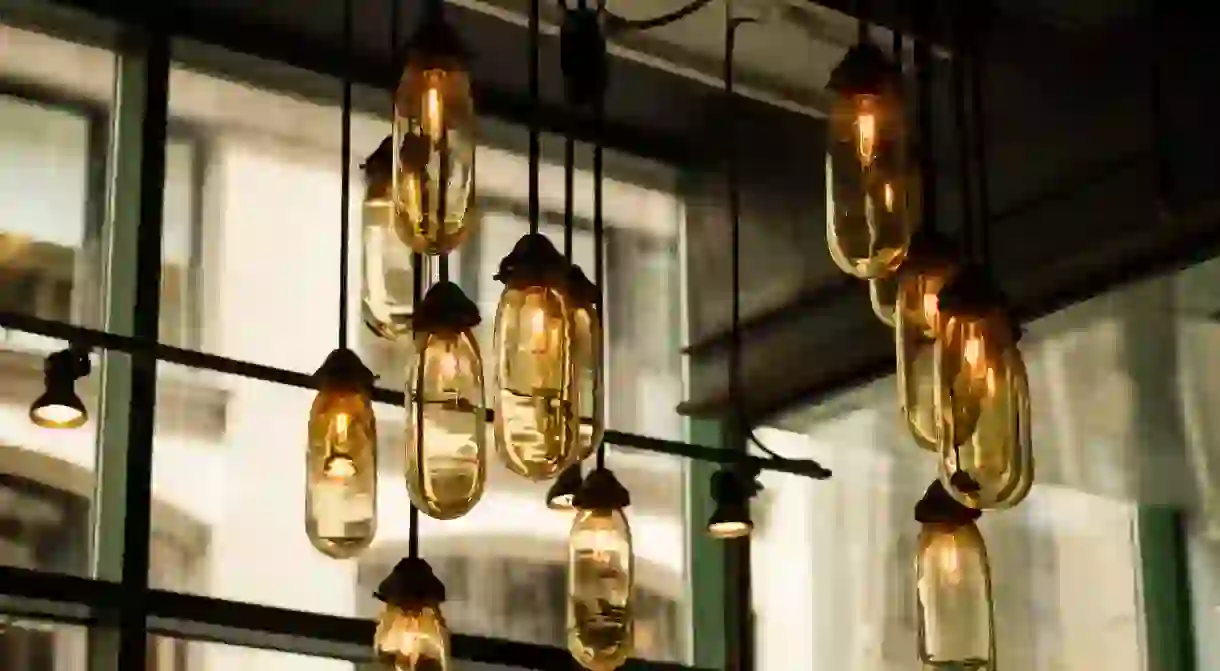What Hipster-Minimalism Says About Cultural Identity

We’ve all seen the hipster aesthetic. It permeates the office spaces of the most progressive tech start-ups, sets the standard for the world’s trendiest restaurants, and serves as the go-to look for most luxury and middle-class urban dwellings. Essentially, it’s an aesthetic ‘elephant in the room’, quietly sipping its soy macchiato and waiting for you to notice its ubiquity. But what exactly does this trend say about our collective consciousness? Do our design choices signify something deeper about the state of modern society?
In the way that one’s neighborhood can denote a particular lifestyle (think Brooklyn’s Greenpoint neighborhood vs. East Flatbush, for instance), one’s design choices denote a specific mindset, even if it’s curated. This globally omnipresent décor is actually a subtle blend of Scandinavian Minimalism (clean lines and muted tones) and industrialized features (brick, glass, and metal) with a touch of the Craftsman style. In a new article published by The Guardian, writer Kyle Chayka discusses the uniformity of the ‘hipster-aesthetic’, and laments its reductionism as “obsessed with a superficial sense of history and the remnants of industrial machinery.” He’s possibly right, but the question still remains: why are we so obsessed with this aesthetic? Surely we’re not all superficial zombies bent on gentrification…

Consider the fundamental features of Scandinavian Minimalism: straight, clean lines; understated, eco-friendly furniture; open, airy spaces; and above all, a sense of utility present in each object. There’s a general weightlessness to the objects themselves, perhaps signifying the importance of mobility: the capacity to move fluidly according to our desires, to effortlessly relocate, swap jobs, reinvent ourselves, and adapt quickly.
A certain freedom is apparent in minimalist designs and light-drenched living spaces. The preference for this atmosphere may represent a societal need to declutter the mind/body/spirit and get down to the essentials, especially given the flashy, intrusive nature of daily life. Society yearns for a tabula rasa–or at least the illusion of it–and it shows.
Now consider the features of the Hipster Aesthetic: metalwork, concrete or unfinished wooden floors, and exposed brick, industrial piping, and bulbs. From this one can glean insight into our raw, somewhat confrontational nature. It basically says, we’re building new things around the old ways, and although we’re not yet a ‘finished’ product, we’re getting there. We’re vulnerable, but with an edge.

Utility: Function Over Feeling
On a practical level, Minimalism means less clutter, which affords more freedom to focus on all the other things that take up our days. Objects possess utility and are not merely decorative; if an object is devoid of function, scrap it. Even Grandma is swapping her dusty porcelain doll cabinets for minimal shelving units, and long gone are the days of heavy Victorian furniture and hodgepodge décor.
It seems that the majority of the middle-class is discarding the clutter and paring down. The glitch? Each relic, token, and object in the home (or even in the office) is attached to a memory. Are we supposed to throw away our stories in the name of utility? Perhaps. A clean decorative slate never hurts.
Consciously or otherwise, our value systems reveal themselves aesthetically, as if the world is saying: We don’t need things, we need ideas. We need functionality, we need performance. The primary medium for communication requires technology (think WiFi, telecommuting, international meetings), so aesthetic qualities of openness seem rather fitting. The “sameness” that Chayka laments (again, rightfully so) is perhaps indicative of our generational stretch for inclusion within a global community and the mantra of function over feeling.
So are we projecting personal qualities that we’d like to tap into, show off, or hide? Only the philosophers and psychologists can postulate. But it sure is fun to think about.













